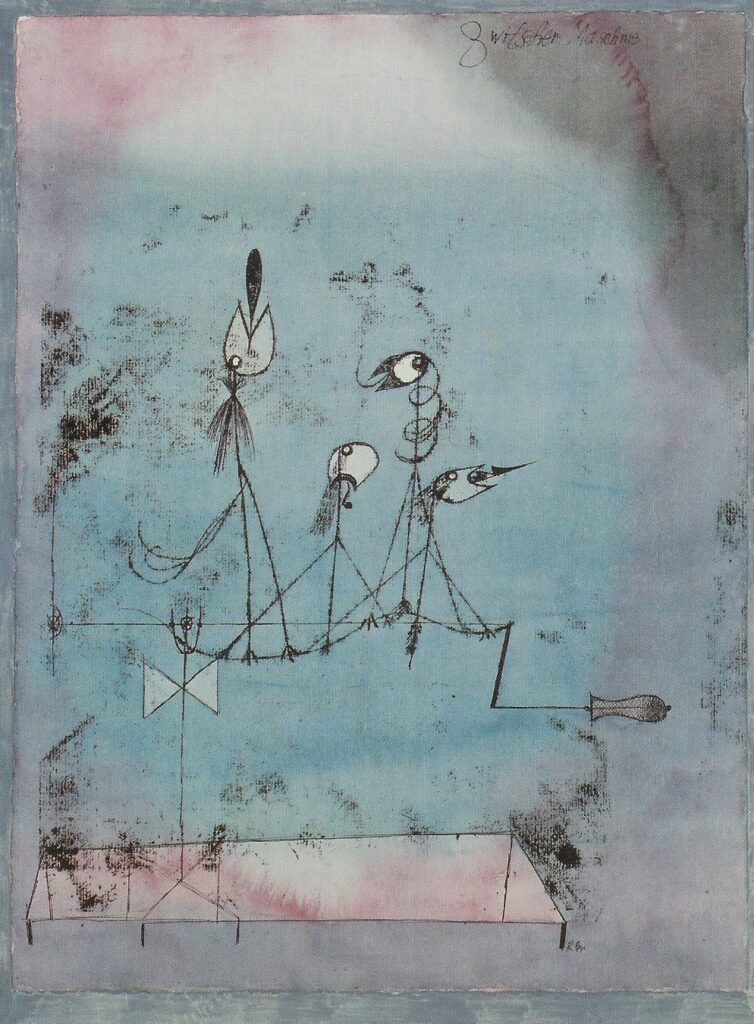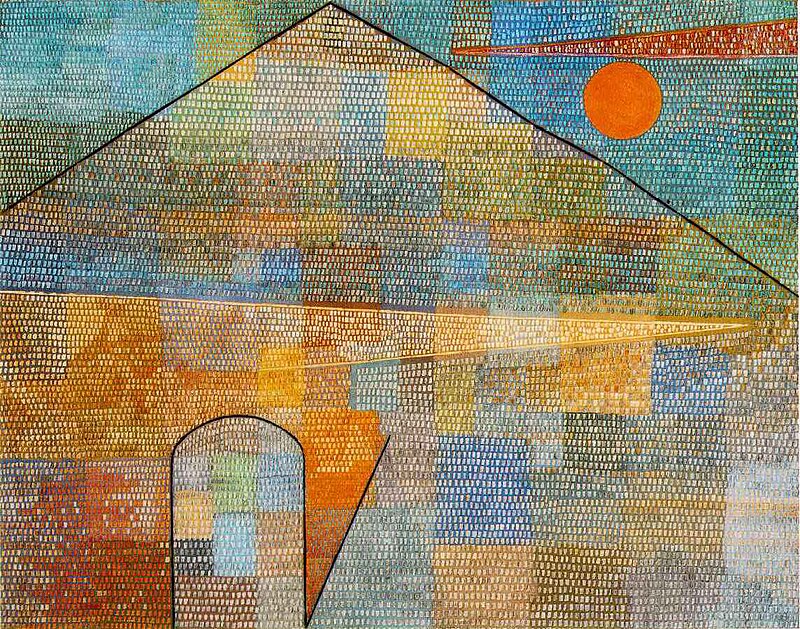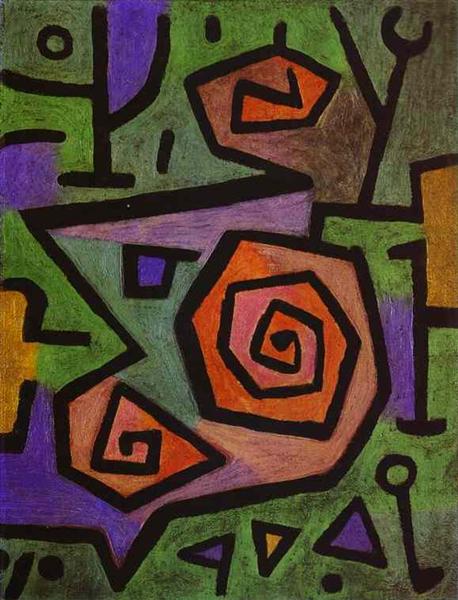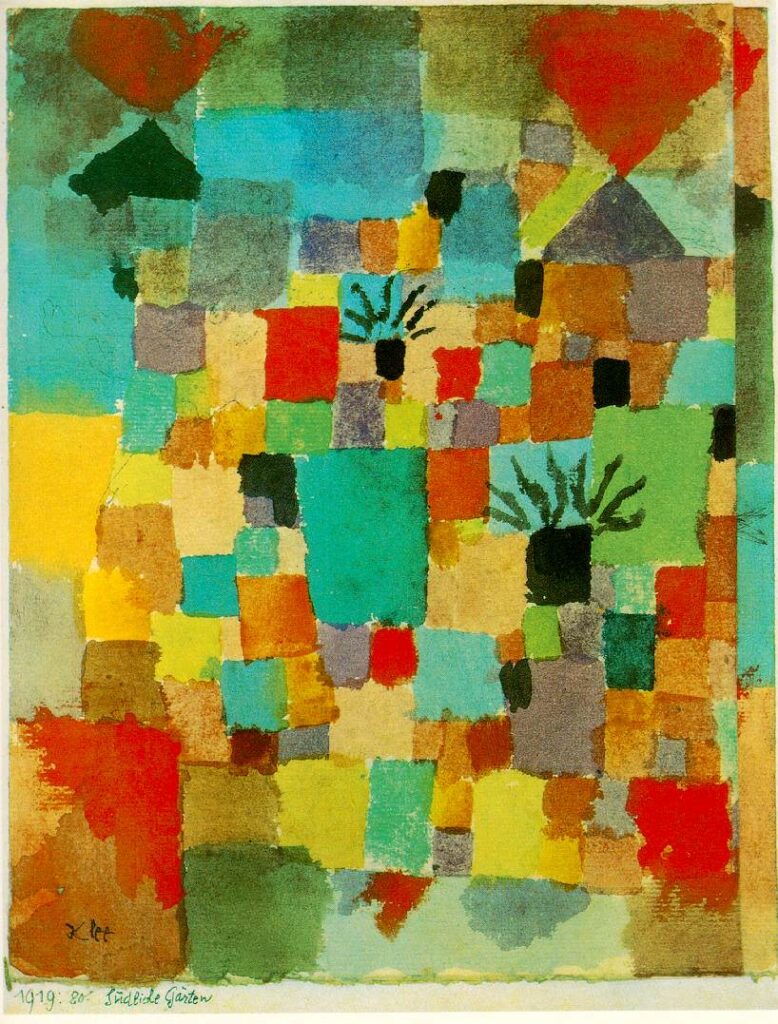Paul Klee, a Swiss-German painter known for his unique approach to art, left an indelible mark on the world of modern art. His works are characterized by their abstract and highly individual style, combining elements of various artistic movements, including Expressionism, Cubism, and Surrealism. Klee’s art is often described as a visual manifestation of his inner thoughts and emotions, with each painting telling a story that transcends traditional artistic boundaries. In this article, we will explore the 10 most famous paintings by Paul Klee, examining their significance, date of completion, dimensions, and current locations.
1. The Twittering Machine (1922)

| Date Completed | 1922 |
| Dimensions | 25 x 38 cm |
| Location | Museum of Modern Art (MoMA), New York, USA |
“The Twittering Machine” is one of Klee’s iconic works, displaying his fascination with the juxtaposition of nature and mechanization. This painting features a complex composition of mechanical and organic elements, with strange creatures perched on a wire, singing into a dark and ominous abyss. The delicate balance between the whimsical and eerie elements in this piece exemplifies Klee’s skill to evoke deep emotions through abstract forms.
FUN FACT: Did you know that Paul Klee was not just an artist, but also a skilled musician? He played the violin, often integrating his musical sensibilities into his visual art.
2. Senecio (1922)

| Date Completed | 1922 |
| Dimensions | 49.5 x 41 cm |
| Location | Kunstmuseum Basel, Switzerland |
“Senecio” is a portrait of an old man, rendered in Klee’s distinctive geometric and abstract style. The use of simple shapes and bold colors creates a powerful and emotional representation of age and wisdom. This painting is a testament to Klee’s skill to convey profound human experiences through seemingly simple and abstract compositions.
3. Fish Magic (1925)

| Date Completed | 1925 |
| Dimensions | 70 x 90 cm |
| Location | Philadelphia Museum of Art, Philadelphia, USA |
“Fish Magic” is a whimsical and dreamlike painting that showcases Klee’s mastery of color and form. It presents a fantastical underwater scene where fish and other aquatic creatures blend with abstract patterns, creating a sense of harmony and fluidity. The imaginative and playful nature of this painting is a hallmark of Klee’s work.
4. Ad Parnassum (1932)

| Date Completed | 1932 |
| Dimensions | 100 x 126 cm |
| Location | Kunstmuseum Basel, Switzerland |
“Ad Parnassum” is a later work by Klee that reflects his mature style and technique. This abstract composition is rich in symbolism and complexity, with various elements that invite viewers to contemplate the painting’s deeper meaning. Klee’s use of color and geometric shapes in this piece contributes to its enigmatic and thought-provoking quality.
5. Castle and Sun (1928)

| Date Completed | 1928 |
| Dimensions | 62 x 78 cm |
| Location | Kunstmuseum Basel, Switzerland |
“Castle and Sun” is a delightful example of Klee’s ability to blend the abstract with the figurative. The sun and the castle are depicted using simplified geometric forms, and the contrast between the two creates a sense of depth and harmony. This picture evokes a sense of nostalgia and wonder, as though it belongs to a distant and dreamlike realm.
6. Heroic Roses (1938)

| Date Completed | 1938 |
| Dimensions | 50.8 x 61 cm |
| Location | Zentrum Paul Klee, Bern, Switzerland |
“Heroic Roses” is one of Klee’s later works, created during a period of political and personal turmoil. Despite its seemingly cheerful subject matter, the painting carries a deeper sense of tension and complexity. The bold use of color and the intricate design of the roses reveal Klee’s ability to convey multiple layers of emotion within a single composition.
7. Angelus Novus (1920)

| Date Completed | 1920 |
| Dimensions | 31 x 24.5 cm |
| Location | Israel Museum, Jerusalem |
“Angelus Novus” is a significant work in Klee’s oeuvre, often associated with the influential philosopher and critic Walter Benjamin. The angel in the painting is portrayed in a state of perpetual forward motion, symbolizing the unstoppable force of history. This work captures the tensions of its time, reflecting the tumultuous period between the two World Wars.
8. Southern (Tunisian) Gardens (1919)

| Date Completed | 1919 |
| Dimensions | 49.5 x 72 cm |
| Location | Kunstmuseum Bern, Switzerland |
“Southern (Tunisian) Gardens” showcases Klee’s fascination with the exotic and the decorative. This drawing features intricate patterns and vibrant colors, inspired by his travels in North Africa. The work is a testament to Klee’s skill to merge his experiences with his artistic sensibilities, creating a unique visual language.
9. Blue Night (1937)

| Date Completed | 1937 |
| Dimensions | 58 x 66 cm |
| Location | Zentrum Paul Klee, Bern, Switzerland |
“Blue Night” is a somber and introspective work created during a difficult period in Klee’s life. The painting’s cool blue tones and abstract forms evoke a sense of melancholy and introspection. This piece represents Klee’s skill to channel his emotions into his art, using color and form to express his inner world.
10. Insula Dulcamara (1938)

| Date Completed | 1938 |
| Dimensions | 46.5 x 61.5 cm |
| Location | Zentrum Paul Klee, Bern, Switzerland |
“Insula Dulcamara” is one of Klee’s final works before his death in 1940. The painting is an exhibition of the artist’s struggles with illness and his impending mortality. The use of organic shapes and muted colors in this drawing conveys a sense of fragility and impermanence, making it a poignant and introspective conclusion to Klee’s artistic journey.
Artwork Spotlight: Le potier (Der Topfer)

“Le potier (Der Topfer)” is an enchanting manifestation of Paul Klee’s abstract and imaginative style where he demonstrates his perfection on colors and form. In this painting, Klee visualizes a potter who is working in a very interesting way with shapes and lines, allowing the viewer to creep into a world of imagination and create.
Frequently Asked Questions
What is the masterpiece of Paul Klee?
His Ad Parnassum (1932), one of his largest and most intricately painted canvases, is regarded as his masterpiece and the pinnacle of his pointillist style. In 1933, his final year in Munich, Germany, he created close to 500 pictures.
What is Paul Klee’s most expensive painting?
The most expensive piece of art ever sold in an auction house was a painting by Paul Klee titled Tanzerin. This masterwork was created in 1932.
How many paintings did Paul Klee paint?
Paul Klee produced almost 10,000 paintings and 4,877 drawings during his lifetime. He also experimented with lithography, engraving, watercolor drawing and even music.
Conclusion
In conclusion, Paul Klee’s artistic legacy is marked by his ability to transcend traditional boundaries and create a visual language that is uniquely his own. The 10 paintings mentioned in this article represent a mere fraction of his vast body of work, but they offer a glimpse into the depth and diversity of his artistic vision. Klee’s skill to evoke emotion, provoke thought, and experiment with form and color continues to inspire artists and art enthusiasts to this day.












